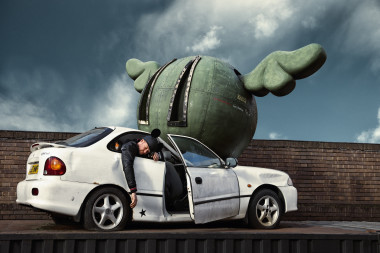THE MONTHLY
October 2024
Essays
Sebastian Smee
Matt Coyle, Nanda\Hobbs gallery
I used to show pictures of Matt Coyle’s pen and ink drawings to friends, and then delight in watching them try to figure out what was going on. The pictures I showed were usually photographs of his drawings. But the drawings were so… photographic that my explanatory words – “This is a drawing he made with black pen” – simply bounced off them. They couldn’t compute.
It surely didn’t help that Coyle’s subjects were so menacing, so spatially complex, and such discombobulating combinations of real and abstract, deep shadow and blinding light, that it was impossible to say what was going on. The question of technique (how is this thing not a mechanical or digital reproduction of a pre-existing thing? How could it be an accumulation of lines drawn by hand onto paper?) was an added load their brains couldn’t bear.
Coyle’s wildly conceived and laboriously executed drawings got more complex and sophisticated every year. And then, over a period of almost a decade, he changed. The Hobart-based artist started working in acrylic paint. He started airbrushing colour onto his compositions. Instead of planning everything out in advance, he embraced intuition and chance. He started eating the unknown.
Coyle’s recent work, which he showed at Nanda\Hobbs gallery in Sydney this year, is utterly transfixing. These mid- to large-scale paintings suggest broken down dioramas, collapsed construction sights and blur-tinged dreamscapes that the artist has somehow shivered into exact and palpable shape. At times I’m reminded of Giorgio de Chirico or Neo Rauch (his distinctive pastel palette and cubist space); other times I see affinities with Thomas Demand or the films of David Lynch.
Coyle’s paintings retain the taut structure and sharp tonal contrasts of his drawings, and they’re still in dialogue with photography and film noir. But there is a new sense of worlds built entirely from his imagination. He has cast off his old dependence on (but not his interest in) the real world and embraced a new uncanniness. Coyle, in his early 50s, has already created one of the most dazzlingly original bodies of work of any artist I know. I can’t wait to see what he does next.
Sebastian Smee is the art critic for The Washington Post and winner of the 2011 Pulitzer Prize for criticism



